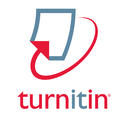Submissions
Submission Preparation Checklist
As part of the submission process, authors are required to check off their submission's compliance with all of the following items, and submissions may be returned to authors that do not adhere to these guidelines.- The submission has not been previously published, nor has it been submitted to another journal or publisher for consideration.
- The submission file is in one of the following file format types: .doc or .docx (MS Word), .odt (OpenOffice), or .rtf (Rich-Text Format).
-
The text adheres to the bibliographic requirements and the style rules indicated in the Author Guidelines, which can be found in the “About” section of the journal.
- Authors must accept and sight the Statement of Originality. This document must be uploaded with the paper submission. Find the option “Statement of Originality” when uploading.
-
References and audio-visual materials are included pursuant to the journal’s specifications, as outlined in the Author Guidelines.
- If I'm sending an article that is going to be peer-reviewed, I will make sure to follow the Ensuring a Blind Review instructions completely.
- I understand and agree to the Policies set forth by the journal and thereby grant the journal permission to publish my submission.
Empirical research articles
Report results of original research. Must comply with requirements of the 7th edition of the Publication Manual of the American Psychological Association, including the following sections in this order: Introduction, Literature Review, Methods, Results, Discussion, Conclusion, and References. Should not exceed 8,000 words in length.
Literature review/state-of-the-art articles
Are a critical review of the literature on a particular theme linked to CLIL. Must comply with requirements of the 7th edition of the Publication Manual of the American Psychological Association. Sections may vary but it must contain conclusions and implications for research and pedagogy. Contain a minimum of 30 quality references. Should not exceed 7,000 words in length.
Commentary articles
Present an argument and/or reflect on points of debate and/or topics in the field of CLIL. Must comply with requirements of the 7th edition of the Publication Manual of the American Psychological Association. Must include References section. Should not exceed 8,000 words in length.
Practice-based articles
Describe or discuss original CLIL activities, projects, initiatives, or lessons designed and/or carried out by practitioners. Together with a description (and discussion) of the CLIL practice, include an introduction, a brief conceptual framework, a context section, conclusion and implications. Must comply with requirements of the 7th edition of the Publication Manual of the American Psychological Association. Must include References section. Should not exceed 4,000 words in length.
Book/Product reviews
Offer a critical review of a book or educational product related to CLIL. The book/product under review cannot be more than two years old by the time the review is submitted. References may be included if appropriate. Should not exceed 1,500 words in length.
Copyright Notice
Authors who publish with this journal agree to the following terms:
This journal and its papers are published with the Creative Commons License Attribution-NonCommercial-NoDerivatives 4.0 International (CC BY-NC-ND 4.0). You are free to share copy and redistribute the material in any medium or format if you: give appropriate credit, provide a link to the license, and indicate if changes were made; don’t use our material for commercial purposes; don’t remix, transform, or build upon the material.
Authors are able to enter into separate, additional contractual arrangements for the non-exclusive distribution of the journal's published version of the work (e.g., post it to an institutional repository or publish it in a book), with an acknowledgement of its initial publication in this journal.
- Authors are permitted and encouraged to post their work online (e.g., in institutional repositories or on their website) prior to and during the submission process, as it can lead to productive exchanges, as well as earlier and greater citation of published work (See The Effect of Open Access).
Privacy Statement
This journal and its contents are the property of the Universidad de La Sabana and, therefore, may be accessed solely for reading or printing, as a personal copies, but may not be used for profit in any way by other parties. Prior authorization from the Universidad de La Sabana is required for any other use, such as the reproduction, transformation, public communication, or distribution of said material for a profit.
The names and email addresses provided to and included in this journal shall be used solely for the declared purposes of this journal and shall not be made available for any other purpose or to any other person.







